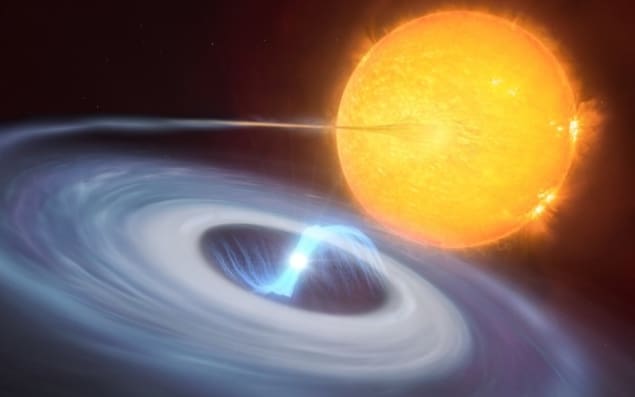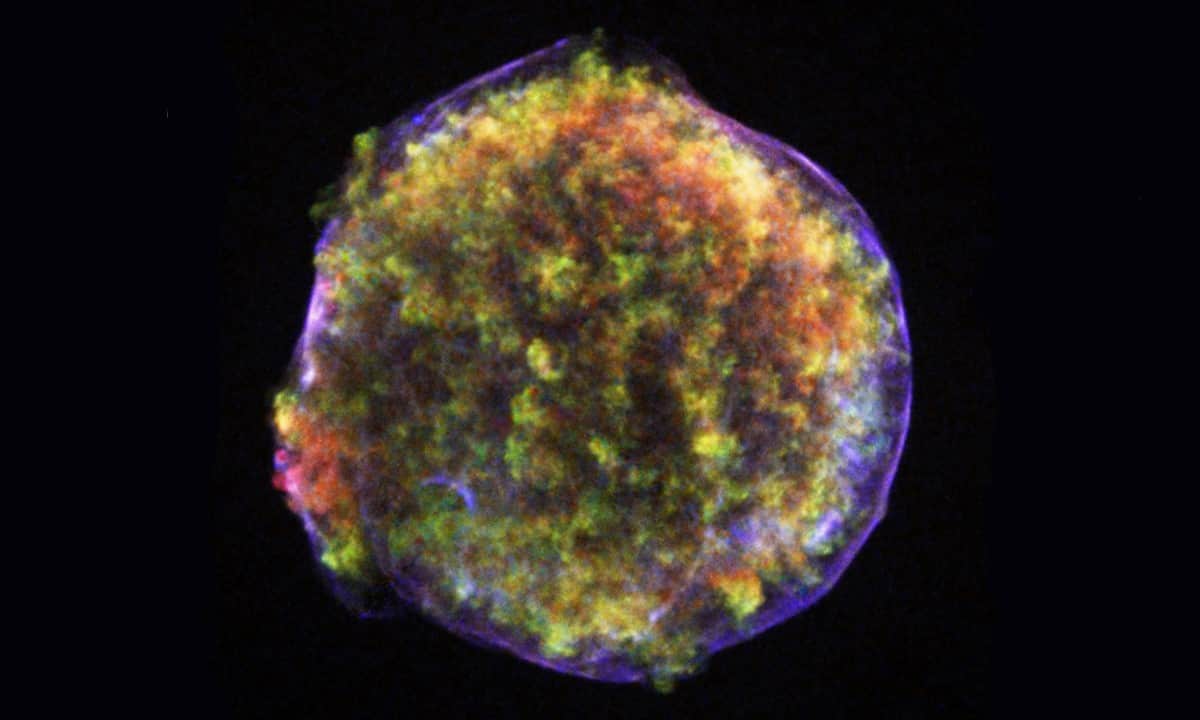
The mystery why of small explosive bursts occur on some accreting white dwarf stars appears to have been solved by a team of astronomers led by Simone Scaringi at the UK’s Durham University. The team examined bursts of light from three white dwarf systems and noticed that their evolution was similar to X-ray bursts that occur on the surfaces of some neutron stars. The team suggests that these “micronovae” on white dwarfs are caused by matter falling onto the poles of the stars – and that this could be a common phenomenon.
Several times over the past 40 years, astronomers have spotted bursts of optical and ultraviolet light from the binary-star system TV Columbae (TV Col). In less than an hour, this light trebles in brightness, before fading within roughly 10 h.
TV Col is known to contain a white dwarf with a moderately strong magnetic field. The white dwarf is accreting material from its companion star, which is known to produce nova explosions. These are not powerful enough to blow the white dwarf apart, but they can trigger runaway thermonuclear explosions across the entire surface of a star as energy is released through hydrogen fusion. When this happens, the star can shine brightly for several weeks.
Fraction of the energy
The bursts on TV Col, release about one millionth of the energy of novae. This could mean that the accreted material is falling onto just a small fraction of the white dwarf’s surface, causing localized fusion. Now, Scaringi and colleagues have found evidence for this explanation.
Looking at data gathered by NASA’s Transiting Exoplanet Survey Satellite (TESS), the team discovered that two other systems produce bursts similar to TV Col. One system is called EI Ursae Majoris and is already known to contain an accreting white dwarf with a moderately strong magnetic field.
The other system is ASASSN-19bh, which little had been known about. Now Scaringi and colleagues have used the European Southern Observatory’s Very Large Telescope in Chile to confirm that ASASSN-19bh does indeed contain a white dwarf with similar characteristics to that of TV Col and EI Ursae Majoris.
Further clue
A further clue to the origin of the bursts came from the observation that time variations in the brightness of bursts from all three systems bear a strong resemblance to X-ray bursts that sometimes occur on the surfaces of accreting neutron stars.

Tiny black holes could cause white dwarf stars to explode
In these neutron stars, accreting material is confined into columns by the extreme magnetic fields of the stars. This means that the material only falls onto the polar regions of those stars. Scaringi and colleagues believe that a similar process is taking place on the three white dwarfs. The result is that thermonuclear burning only occurs in the stars’ polar regions, and this is likely to be the cause of the observed micronovae.
The team believes that these bursts could be common on white dwarfs. To study them in more detail, the astronomers now aim to capture more micronovae in large-scale surveys, and make quick follow-up measurements with instruments including the VLT.
The research is described in Nature.
